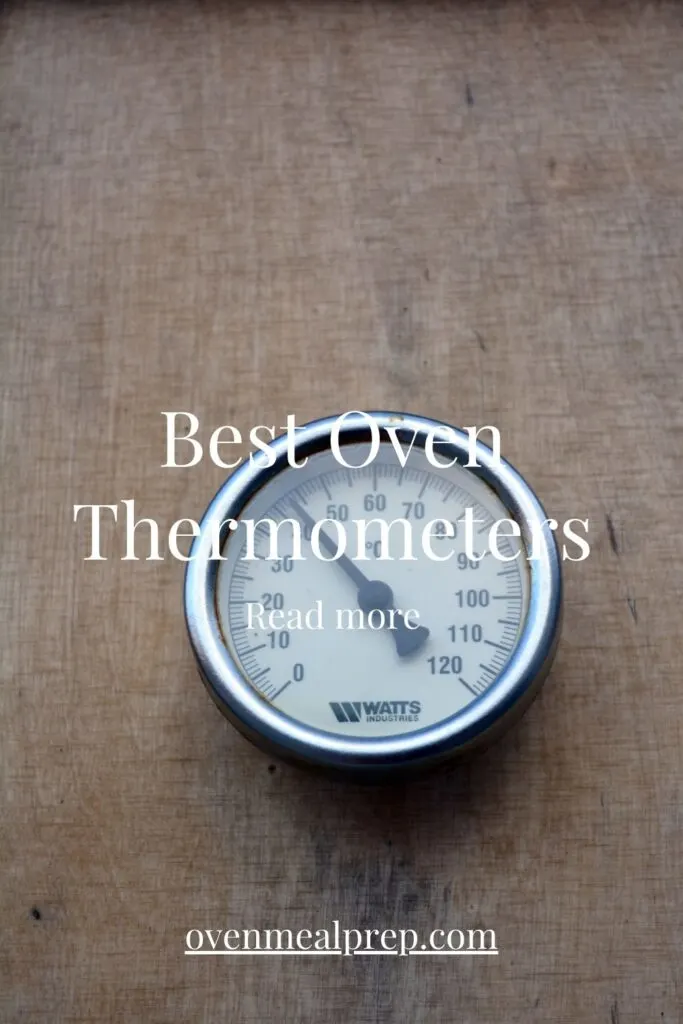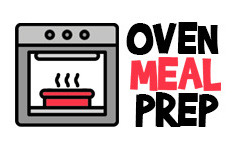Roasting, baking, and dehydrating, oven is an essential kitchen appliance that almost every household owns. It makes it easy to cook your favorite recipes by simply adjusting the time and temperature setting to achieve delicious and flavorful dishes.
Following the recipes for steps and techniques is straightforward, but sometimes the results do not come out the same due to discrepancy between the temperature on the knob and actual oven temperature.
Just relying on the indicated temperature on the oven may not be enough for heating food, which potentially causes food safety issues for dishes containing meat or poultry.
For any home cook, it is best to calibrate the oven to maximize the benefits, and this is where an oven thermometer comes in handy. Place it inside of the oven to precisely determine temperature and be able to prevent over or undercooking food.
Is there an accurate oven thermometer?
Yes, there are accurate oven thermometer used for oven cooking including contact and non-contact temperature measuring devices.
The contact thermometers are the most popular choices that measures the temperature using heat transfer or thermal conduction, which requires physical contact with the food.
On the contrary, non-contact thermometers do not require physical contact. The device reads the temperature level of thermal radiation emitted from the object using a digital oven thermometer.
The most accurate oven thermometer is a Rubbermaid Commercial Thermometer that can be left inside the oven without any danger. Made with durable stainless steel, the gauge is capable of sustaining extreme temperature that most chefs are fond of using to get accurate temperature setting inside the oven.
What kind of thermometer do you use to calibrate an oven?
To achieve consistent results, cooking food at the right temperature is recommended in every recipe. Calibrating an oven using an accurate thermometer will save time for all the hard work and meal preparation.
Oven generally come with built-in temperature regulators, but this does not mean it is the most accurate setting.
There are two types of thermometers to use in an oven including a digital probe-type model or dial and easy-to-read numbers. However, to calibrate an oven, dial and easy-to-read numbers are a better option to work with.
Perform test inside of oven to see if your oven runs hotter or cooler, then adjust accordingly when following recipes. Doing the test and understanding your oven will make a difference in temperature range that produces better results.
Depending on the accuracy, preferred cooking method, and readability, there are a few other options for you to choose from.
Where is the best place to put an oven thermometer?
Generally speaking, oven thermometers need to be placed where the food is cooked. The best approach is positioning the oven thermometer in the middle of the center rack where most food cooks.
From there, set the oven to 350 degrees Fahrenheit or 176 degrees Celsius. After the oven has preheated, check the thermometer reading and evaluate the temperature to accuracy.
In addition, most oven tend to have hotspots. Moving the oven thermometer around during the test will give you a more accurate understanding about cooking in your oven.
Tips to choose the best oven thermometer
Finding an oven thermometer that works best for your cooking style can be challenging. Readability, calibrating for accuracy, design and temperature limits, are factors that need to be considered when choosing the right one.
Here are useful tips to select the best oven thermometer for your needs:
- Analog or digital: Analog thermometers are easily placed on or hung underneath an oven rack. The device is most often a round shape and features a dial displaying the current oven temperature. Versus the digital thermometers suits well for ovens without windows to check the temperature, and most often used in meat cooking.
- Temperature limits: Look for an oven thermometer that is capable of reading a wide range of temperatures including degrees in both Fahrenheit and Celsius. Analog thermometers increment in 10, 25 or 50 degree temperatures, where as the digital thermometers show a more exact temperature including a tenth of a degree.
- Accuracy: Be aware that oven thermometers can become less precise over time. Therefore, choose ones that can be tested such as probe-type thermometer. Most analog oven thermometers are generally not waterproof, so avoid a boiling water test.
- Readability: A white background with large numbers allows you to read temperatures without opening the oven door, which is critical to avoid losing the heat while testing. Simpler markings makes it easier to read the oven thermometer while the door is closed.
- Design: Choose designs that can be either attached to the oven rack or stand on their own. Avoid any oven thermometers that easily tip over, so look for models that have a sturdy base at least two inches wide to prevent this issue.
Best Oven Thermometers
Precision and consistency of temperature helps to bake, roast, broil, or any cooking function in the oven. There should be no guessing game allowing you to fall into hotspots that burn or undercook food.
Perfect for commercial and hot kitchens because the gauge is made of durable stainless steel with a shatterproof display. It is perfect for baking or using recipes with non-standard temperatures.
Pros:Versatility of standing or hanging in the oven
Easy temperature reading with oversized display
No batteries are required
Can be used in toaster oven, grills, smokers
Small base
Readings fluctuate
The rotating clip and adjustable stand fits almost every oven rack for better reading angles without opening the door. Made with food grade stainless steel, which also makes it durable in extreme heat.
Pros:Precise calibration
Safety glass and stainless steel
Wide temperature range from 100 to 600 degrees Fahrenheit and 40 to 320 degrees Celsius
Very accurate
Not waterproof
Clip bends easily
Difficult to clean
If you are looking versatile oven temperature, the Taylor Precision dial oven thermometer is the one. It has side and front readings, and can be hung or placed on the oven rack without toppling over.
Pros:Easy to read
Indicate warming, roasting, and baking zone marks
Constructed with stainless steel
Becomes extremely hot during use
Temperature reading is not instant
Capable of attaching as built-in hook or standing panel to make placement convenient. It offers wide temperature range from 50 to 500 degrees, making it suitable for most oven cooking.
Pros:Affordable
Stainless steel
Easy to read
Marking for hold, bake, and roast
No Celsius marks
Fewer features
The KT Thermo oven thermometer is perfect for grilling because it offers a temperature range of 100 to 600 degrees with large numbers to help read easily through the oven door. Also, the rotating hook helps to adjust based on the food placement.
Pros:Reads accurate
Easy to clean
High temperature resistance
Rotating hook
No Celsius marks
This oven thermometer withstands high heat without an issue, which makes it perfect for outdoor grilling and oven roasting. It includes clip to hang or stand by itself anywhere in the oven. However, the starting temperature is at 150 degrees Fahrenheit or 65 degrees Celsius.
Pros:Clear reading indication
Capable to handle high heat
Consistent temperatures
Performs up to 600 degrees Fahrenheit
Does not include Celsius
Starts at 150 degrees Fahrenheit
When the size matters, choose Cooper oven thermometer. The compact size includes a built-in hanger and stable base that makes it a versatile model to try. Includes both Fahrenheit and Celsius, which makes it convenient to read.
Pros:Compact and portable
Wide temperature range
Both Celsius and Fahrenheit indications
Crowded numbering which is difficult to read

Selecting Oven Thermometers: Conclusion
Whether roasting, baking or dehydrating food, the results may not come out as expected if the appliance temperature is the problem while oven cooking. Therefore, owning an oven thermometer is quite useful.
The gauge helps to understand temperatures inside your oven much better, so you can adjust higher or lower based on recommended temperatures from the recipe.
Both dial and digital readings have their benefits, and there are many options to consider to find the best oven thermometer for your needs. Keep in mind your oven cooking preferences, accuracy, readability, and design to consider when choosing the right device.
Always test the oven thermometer since it may lose accuracy over time, and position near where the food is cooked to get the precise temperature setting.







